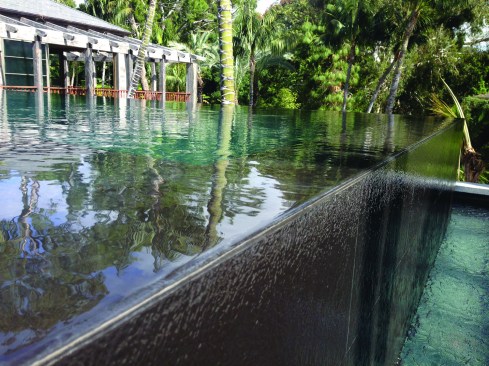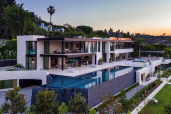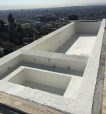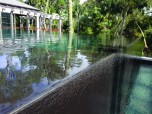
It’s a near-certainty your next project won’t come close to rivaling the pool and water features at 924 Bel Air Road in Bel Air, Calif. How could it? The 12-bedroom, 21-bathroom home is a master class in high-end residential design and construction, right down to a second-floor 85-foot infinity pool and the third floor’s swim-around Jacuzzi pool.
The 38,000 sq. ft. home is expected to set records as the most expensive home ever listed and the most expensive single home ever sold in the U.S. As the owner told CNBC, “The level of quality and attention to detail is unsurpassed.”
What makes a mega-home instructive to pool and waterproofing professionals? Many of the waterproofing concerns of 924 Bel Air Road apply in some degree to most pool owners. The extreme lengths the owner’s representatives went to implement best-in-class solutions stands as an object lesson for other owners and builders. That includes the means and methods used to waterproof the home’s pools and spas:
- Tiny Leak, Big Problem. Building expansive pools over habitable areas presents obvious must-stay-dry challenges. Similar cost-saving concerns apply to pool or spa waterproofing project. The Alliance for Water Efficiency says an inch-a-day leak in an average-sized pool represents the loss of more than 100,000 gallons per year. That’s a needless homeowner expense and waste of a precious natural resource.
- Think System, Not Product. The increasing sophistication of pool and water features challenges consultants and contractors like never before. “Aquascapes and water shapes are our fastest-growing segment,” says Trevor Foster, director of training for Miracote, a leading manufacturer of waterproofing systems for pools and spas. “The key is a sustainable, multi-step system to ensure you’re not vulnerable to leaking or delamination to hydrostatic or osmotic pressure, or movement from thermal expansion.” Foster’s company is responsible for the waterproofing system that safeguards 924 Bel Air’s fine art and costly furnishings from rooftop pool and spa leaks.
- Team Collaboration. Building code does not set standards for waterproofing a pool or water features. What is best practice? How should you waterproof tie-ins for acrylic panels or mitigate the effects of thermal expansion? For new projects, Foster suggests the general contractor, waterproofing subcontractor, waterproofing consultant, and a waterproofing material representative meet early and often to avoid unwelcome surprises.
- Waterproofing Consultants. Waterproofing consultants understand the harsh realities of hydrostatic pressure as few do. It makes sense for architects, home designers, and pool builders to team-up with a qualified waterproofing consultant. It’s the consultant’s job to ensure project integrity, especially in situations where the owner instructs, “This is what I want. Build it.”
- Vetted Solutions. The surging interest in backyard water environments has spawned the rise of questionable waterproofing claims and products. Foster advises pool builders and consultants to make sure the products they specify have respected third-party documentation such as ASTM test certification. “Unsubstantiated numbers on a data sheet are a little scary,” warns Foster.
As you make plans for your next pool and spa construction project, keep the lessons of 924 Bel Air in mind. To learn more, including exclusive photographs of 924 Bel Air, visit here.


